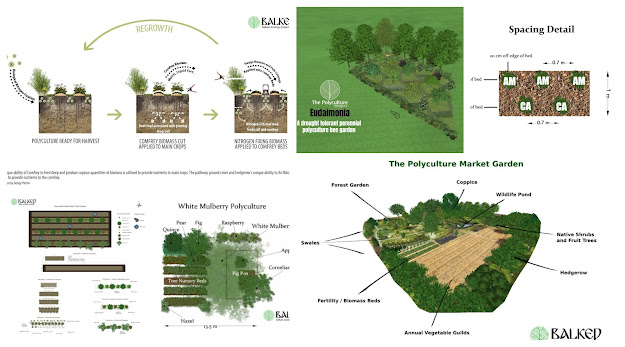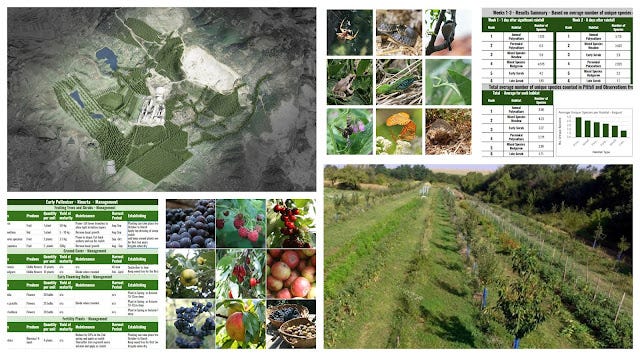So why are Worms so important and what makes them a garden ally?
There are many species of earthworms on our planet, each specie specially adapted to particular soils and particular areas of the soil. Their chief role is that of the decomposer, keeping nutrients flowing through life and death, but all play other very important roles in our ecosystems.Plumbing and Ventilation
Worms spend most of their life tunnelling through the soil. In a healthy soil the top 20 cm or so contains an extensive network of such tunnels created by the worms. This is also the layer of soil that contains the majority of plant roots. Plant roots need a good supply of oxygen to maintain growth and the worm tunnels allow air to circulate freely among the roots ensuring a good supply. At the same time the tunnels allow the delivery of rain water into the root zone whilst allowing the excess water to drain away.
As well as helping the plant roots directly, this aeration encourages the decay of dead material which releases nitrates and other plant nutrients into the soil.
Mining and Redistribution of Minerals
Certain worms are active deeper than the top 20cm of the soil. This deeper tunnelling provides another major contribution of the earth worm. Their vertical movement through the soil can bring nutrients washed deep into the soil by rainwater, where they are unavailable to the majority of plant roots, to upper levels within reach of the plant roots.
Welcome to our Online Store where you can find Forest Garden/ Permaculture plants, seeds, bulbs and Polyculture multi-packs along with digital goods and services such as Online Courses, Webinars, eBooks, and Online Consultancy. We hope you enjoy the store and find something you like :) It's your purchases that keep our Project going. Yuu can also find our full list of trees. shrubs and herbs for forest gardens on our website here
| . |
Fertilisers
The worm casts that are often seen on the surface of the soil are also deposited throughout the soil profile. These castings are rich in minerals. In fact, the worm castings are of such benefit to plant growth, that breeding worms to harvest these castings has become a very successful biological method of supplying fertiliser, known as vermicomposting. Some of the benefits of vermicompost include,
- Microbial activity in vermicompost is 10 to 20 times higher than in the soil and organic matter that the worm ingests. This microbial activity ultimately provides mineral nutrients to plants.
- Improves water holding capacity of the soil
- Enhances seed germination, plant growth, and crop yield
- Improves root growth and structure
 |
| Eisenia fetida |
Want to learn more about Regenerative Landscape Design? Join The Bloom Room!
The Bloom Room is designed to create a space for more in-depth learning, for sharing projects and ideas, for seeking advice and discovering opportunities.
Ultimately, it aims to build a more intimate, interactive, and actionable relationship between members, a way for the Bloom Room community to support each other’s projects and learning journeys, and to encourage and facilitate the design, build, and management of more regenerative landscapes across our planet.
What you can expect as a member of the Bloom Room
As a member of the Bloom Room you can expect;
Access to an interactive forum where you can ask questions, direct what type of content you would like to see as well as share your own content and projects.
Live sessions featuring general Q&A and tutorials on design software for creating and presenting polycultures.
Full Access to all of the content on Substack
A 500 EUR discount on all of our online courses
Future opportunities to join our Global Regenerative Landscape Design and Consultancy Service, with potential roles for those with the will and skill to join our design team.
An opportunity to take part in the group ownership of a Regenerative Landscape. You will find more details on that here.
Become a paid subscriber to our Substack to join. The annual subscription is currently $70 and the monthly subscription is $7 (monthly subscription excludes discounts for products and services) . You can join here, we look forward to meeting you!
Where you will find worms in your garden ecosystem.
There are some 3000+ named species of earthworm on this planet, researchers have broken them into three categories, largely descriptive of their habits in the soil. These three categories are Endogeic, Anecic and Epigeic. |
Endogeic worms build complex lateral burrow systems through all layers of the upper mineral soil. These worms rarely come to the surface, instead spend their lives in these burrow systems where they feed on decayed organic matter and bits of mineral soil. They are the only category of worm which actually eat SOIL and not strictly the organic component. Endogeic worms tend to be medium sized and pale coloured and make great miners and re-distributors of valuable plant minerals
Anecic worms such as Lumbricus terrestris build permanent, vertical burrows that extend from the soil surface down through the mineral soil layer. It is not unusual for these burrows to reach a depth of 2 meters or more. The anecic species feed in decaying surface litter, so come to the soil surface regularly, which leaves them exposed to predators. These worms require a stable burrow environment in order to thrive. In the absence of this burrow, anecic worms will neither breed nor grow. There deep burrows contribute greatly to the redistribution of plant minerals
Epigeic worm are the guys used in vermicomposting systems, like Eisenia fetida. In nature epigeic worms live and feed in the top soil and duff layer on the soil surface. These small, deeply pigmented worms have a poor burrowing ability, preferring instead an environment of loose organic litter or loose topsoil rich in organic matter.
How to encourage earthworms
Worms like the type of soil that the majority of our fruit and vegetable crops like i.e not too acidic, not too alkaline, moist but not bone dry or sopping wet. If your soil is of moderate pH and moistness you will almost certainly have a healthy population already. If you do not have many earthworms in your soil, introduce some of the practices described below. It is surprising how quickly they build up in favourable conditions.Many worms eat dead or decaying plant remains, including straw, leaf litter and dead roots and will breed exponentially in the presence of such organic matter. Applying these materials to the surface of the soil i.e mulching, will increase your populations. Leaving the stubble and roots of annual plants to rot down in the soil will provide a good source of food. Permanent pasture such as a lawn provides plenty of organic matter as leaves and roots die and decay, worms love this kind of habitat.
Do not use fertilisers and fungicides
Highly acidifying fertilisers such as ammonium sulfate and some fungicides reduce worm numbers. Researchers have found that orchards sprayed with bordeaux or other copper sprays contain few earthworms.
Keep soil moist
Worms can lose 20% of their body weight each day in mucus and castings, so they need moisture to stay alive. Ground cover such as pasture or shrubs and herbs reduce moisture evaporation as will applying mulch to the surface. In dry times some species burrow deep into the soil and are inactive until rain 'reactivates' them. Having a good steady supply of organic matter cycling through your soil and building humus will also provide higher water retentive properties in the soil.
Reduce soil compaction
It is difficult for earthworms to move through heavily compacted soil and no tread beds are a great way to avoid compaction. On larger sites it is necessary to keep vehicle and animal traffic to a minimum, especially in wet conditions.
Reduce cultivation
Digging the soil is obviously going to create disturbance and stress for our elongated comrades. No dig gardening , no till or minimal till agricultural practices are all excellent ways to keep the megadrilles around and happy. Researchers have found that after four years, zero-tilled paddocks had twice as many worms as cultivated soils. However, shallow cultivation may not affect worm numbers.
Part 2 in this series looks at Wasps click here to take a look.
Support Our Project
If you appreciate the work we are doing you can show your support in several ways.
Become a member of the Bloom Room. A $70 annual or $7 per month subscription to our Substack provides you with access to live sessions, design tutorials, a members forum and more, see details here.
Make a purchase of plants or seeds from our Nursery or Online Store
Joining us for one of our Practical Courses or Online Courses
Comment, like, and share our content on social media.
If you appreciate the work we are doing you can show your support in several ways.
Become a member of the Bloom Room. A $70 annual or $7 per month subscription to our Substack provides you with access to live sessions, design tutorials, a members forum and more, see details here.
Make a purchase of plants or seeds from our Nursery or Online Store
Joining us for one of our Practical Courses or Online Courses
Comment, like, and share our content on social media.





























